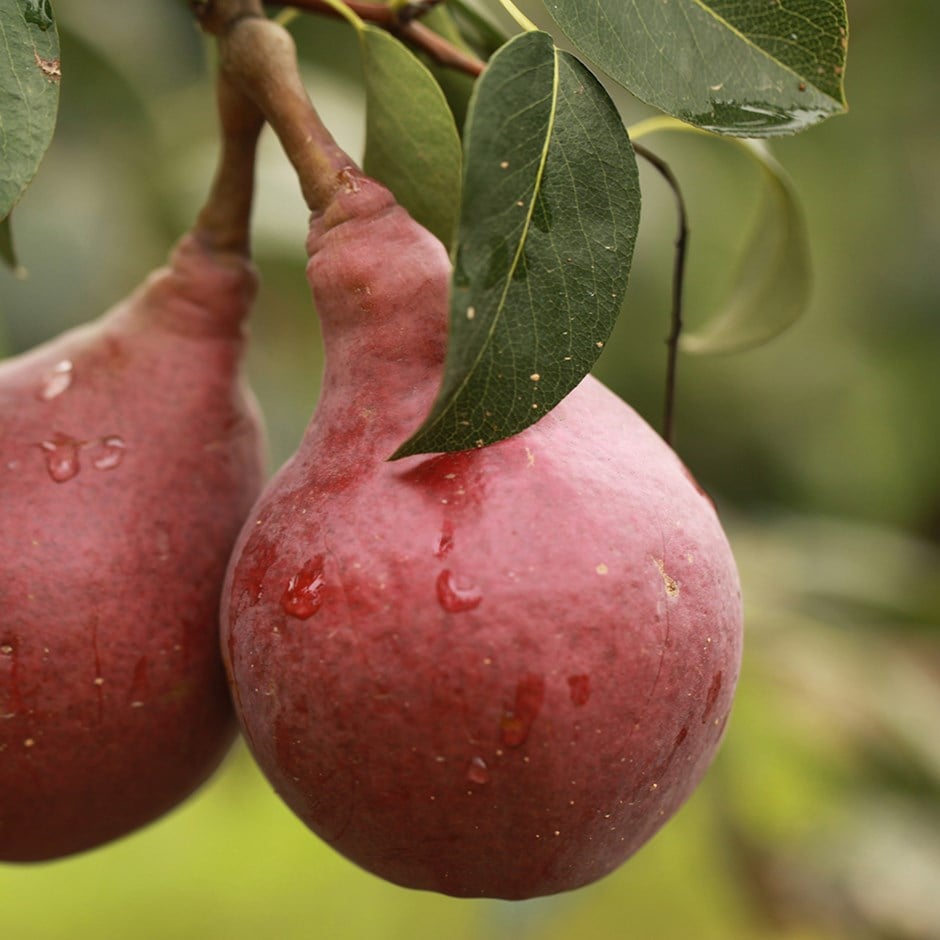pear 'Red Sensation Bartlett'
pear ( syn. Pyrus pyrifolia 'Sensation' ) ( syn. Pyrus communis 'Sensation' )
- bare root | QA root stock | 1.2m
- £26.99
- available to order from autumn 2024
Delivery options
- Standard £7.95
- Position: full sun
- Soil: moderately fertile, moist but well-drained soil
- Rate of growth: average
- Flowering period: April
- Hardiness: fully hardy
‘Sensation’ is a red-skinned sport of 'Williams' Bon Chrétien' and in early to mid spring, a profusion of fragrant, creamy white flowers appear in clusters along its branches. As autumn arrives, this pear bears medium to large, thin-skinned, yellow fruits that gradually develop a dark red blush as they ripen. The white flesh of these pears is smooth, juicy, exceptionally sweet, and tender, and perfect as either a dessert or culinary pear.
Pollination information: Though partially self-fertile, this pear belongs to pollination group 3 and will produce a bigger crop if planted with another variety of pear. Ideally, this should come from the same pollination group, however it is possible to use one from group 2 as well.
Pollination information: Though partially self-fertile, this pear belongs to pollination group 3 and will produce a bigger crop if planted with another variety of pear. Ideally, this should come from the same pollination group, however it is possible to use one from group 2 as well.
When planting your pear tree, prepare a hole up to three times the diameter of its root system. Fork over the base of the pit in readiness, incorporating plenty of organic matter into the backfill and planting hole. Avoiding frozen and waterlogged soil, trees should be planted out as they arrive. If you've ordered a bare root tree, soak the roots in a bucket of water for half an hour prior to planting, or if this is not possible, they can be heeled in temporarily, covering their roots with soil, or potted up. In exposed positions, stake firmly and keep the base weed-free. Apply a balanced fertiliser in early spring to support growth and fruiting and provide regular watering during hot, dry spells. The main winter prune, avoiding frosty conditions, involves removing dead, dying, and diseased wood to create an open crown. Additionally, reduce leaders and laterals by a third to establish an airy structure without crisscrossing branches. In August, summer prune by shortening side shoots longer than 20cm (8”) back to three leaves, promoting fruit ripening and encouraging more fruit buds. Always ensure that the growth you trim feels firm to the touch. Pears naturally shed a small quantity of the developing fruits in mid summer. After this has occurred, thin out the remaining pears, leaving one pear per cluster.
